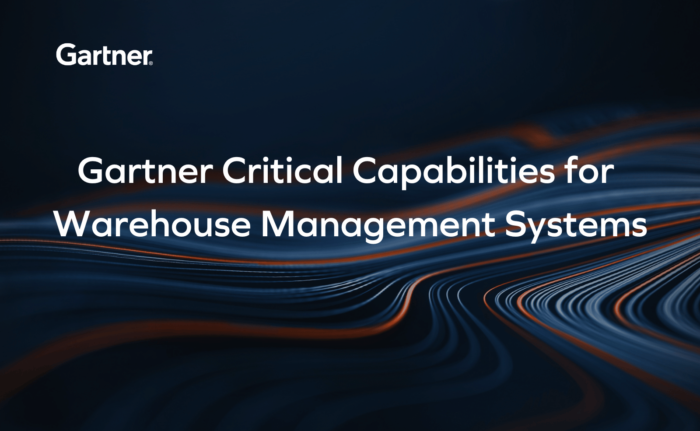
When it comes to picking a WMS for your warehouse, there’s a lot to consider. Picking the wrong system can cause major issues, but delaying too long can also lead to lost revenue opportunities or potentially more problems as you limp along with an outdated system. Finding the right WMS means finding a system with the functionality you need, from a vendor you can trust, who aligns with your company and can deliver according to your goals.
As a manager, you are best positioned to select the tools that improve operations and ultimately reduce costs. We know that can be a little daunting. That’s why we put together this short guide to picking a WMS. Here are our tips for selecting the right on-premise, cloud-based WMS, or SaaS WMS solution for your business.
Determine Why You Need A New WMS
Before diving into the selection process, it’s important to understand why you’re investing in a new system. A thorough investigation into your business needs will help you determine what features are essential for success. Some of the most common reasons to seek a new WMS include:
- Technology will increase revenue by reducing workforce-related costs.
- Solution will solve warehouse problems like manual errors in data entry that are causing inventory count issues.
- You have a system that isn’t working, or no longer works with other software you use, so the investment is important to make your overall infrastructure work best.
- You’re growing and looking for the best path to keep up with that growth while planning for future success through smarter budget allocations.
Each of these reasons will cause you to look at the process slightly differently. For example, a growing company has different immediate needs than one that is hoping to stem losses or theft. And, a company with an ERP that can automate the order fulfillment process with a new WMS may place integrations as a higher priority. (Check out our complete ERP vs. WMS comparison.)
Check Existing Software and Hardware
A WMS can be an amazing tool when it works in conjunction with your existing software. If there’s a “must-have” system you need to integrate with, share this with potential vendors and ask about their experience.
You want someone who has done it before, not to be the guinea pig for their team to test something new. But, don’t just stop at software. Look at the hardware you’re using right now, including mobile devices, barcode scanners, PCs, routers, and other assets in your warehouse. Make sure when you are picking a new WMS that you choose one that can support these as well as the tools you need to grow.
Create an Internal Resource Plan
After looking at your business and existing technology, look at the people who will be working with the WMS on your behalf. You’ll want to start by securing a commitment to the project. The best way to do this is with an internal resource plan and by obtaining a commitment from the entire business that the WMS project will be staffed appropriately.
Delineate all the full-time and part-time resources by department that will be needed for the project. Consider their expertise and knowledge of existing technology to see how much automation they may be able to support.
A thorough internal resource plan means getting insight from the entire organization including your warehouse team, your IT group, and executive leadership.
- Warehouse managers deal with receiving, inventory, picking, and shipping daily. They know the strengths and weaknesses of the operations and can pinpoint the manpower needed to implement a new WMS from the operations side.
- Your IT team understands the technical aspect of your operations and will offer vital input on infrastructure requirements and what it will take to get a new WMS up and running from the technical side.
- Your executive team will need to appoint a champion and ensure that the individual has the bandwidth to support the endeavor.
Look for gaps in institutional knowledge and operations, with an eye toward where technology can help or where you might need additional support. Engaging your warehouse team, your IT group, and executive leadership will ensure you don’t miscalculate resource requirements.
At the end of this process, build a list of the teams who are involved with the software and your leadership. Get a representative for each to become part of your WMS RFP review and implementation teams, so you can have everyone available when needed
Build a Business Case
A business case will enable you to establish key metrics for measuring results, the budget needed to cover internal and external software resources for the project, and the cost/benefit ratio of new WMS capabilities and how it will support overall savings and labor efficiencies.
Supply chain needs are always evolving, and everything moves at the speed of light, with acquisitions, new services, and business lines to manage. All these demands will put a strain on your operations, so you’re wise to begin your WMS search with a very broad look at your overall needs and goals.
- First, you want to gain insight into what the emerging business needs are, like new offerings, verticals, and acquisitions.
- This information is then used to give the operations team data to help them determine all functional requirements for a successful implementation.
- Finally, the IT team studies those needs and layers in IT requirements to ensure the selected WMS will be consistent with their plans.
Define Specific Requirements
Selecting the right WMS requires a deep understanding of what you need – ambiguity has no place here. Create a list that outlines and matches both your short and long-term goals. This means defining all functional requirements, including all traditional WMS functions from inside the warehouse, plus activities related to yard management, dock scheduling, labor reporting, different picking activities, shipment processing activities, etc. Build out lists for receiving, picking, packing, storing, inventory counts, and more.
A requirements list can be used to guide conversations with vendors to ensure you’re asking the right questions and that you’re not forgetting something critical. One important thing to consider in your list is that you’re looking beyond the warehouse. Consider how orders enter your supply chain, who needs to approve inventory resupplies, how vendors and customers interact with you, and places where other business groups are involved.
Don’t forget to take time to identify movements that are out of the norm for your industry. You may have non-standard needs for some products, especially if you’re growing or expanding into e-commerce. Ask how a WMS will handle these issues as well. The sooner this is accounted for, the better.
Look for Vendors
There are a bevy of vendors to choose from, which means it can be difficult to know how and where to get started. Do you look at the most recent Gartner Magic Quadrant for the top ranked WMS providers? Poll your contacts on LinkedIn for references? Revisit providers that have served you well in the past? Consider new and upcoming thought leaders? The answer to all of these questions should be yes!
Exhaust all of your options and take advantage of others’ wins and losses. Begin your search with some general research on 5-8 vendors. Gather information like:
- Do they provide the functionality you need?
- Is the solution configurable to adapt as your business changes?
- What are their licensing costs?
- What are their deployment costs?
- What services are included?
- What timeline can you expect from this kind of project?
This will give you a high level idea of fit, and from there, you can narrow down the list of vendors to engage with. Provide that list of vendors with your detailed list of requirements and wait to review that in conjunction with their RFP. From there, you can initiate the selection process.
Review Responses and Dive Into Selection
The final selection process is up to you and what you deem most important in terms of functionality and support. With that said, we can offer a few pieces of advice once you have a complete requirements list and received RFPs.
The first is to ask vendors about pricing and then move it down your list after the must-have features you’ve identified. If you judge primarily on price, you may wind up missing out on a feature you need. This will likely lead to additional costs or force you to rip and replace one solution with another down the line.
Gauge the Fit: With your requirements list and vendor responses in hand, your team can rank vendors for each functional requirement. Most of the reputable WMS vendors are going to be able to handle all of the basic functionality you need, and most likely they will enable you to improve how you’re performing today. But, many of these vendors will provide more functionality than you need which means you will probably only use about 50% of the available functionality. Having a good understanding of your warehouse complexity is key as more involved facilities require more WMS functional breadth and depth to support their needs, while less complex operations often require less functional robustness. You don’t want to overbuy or underbuy.
Assess Cultural Fit: A new WMS is a long-term partnership with a software vendor. You need to take this into consideration when making your decision. To be sure the vendor you choose is a good fit culturally for your organization, start by asking these questions:
- How competent is their support offering?
- What are their response times?
- How easily can they scale with your business if you decide to add automation or additional sites?
- What is the impact of upgrades and can you take advantage of new functionality in the years ahead?
Make sure the vendor is focused on improving their software in your vertical and market, and that the software will be available for the foreseeable future. The last thing you want to do is spend months implementing a new software, only for it to become obsolete a few years later.
Speak to References and Evaluate Best Practices
We also always recommend visiting the vendor’s current customers to get real and honest feedback on the solution.
Remember, when evaluating a WMS, especially during demonstrations, do not try to replicate exactly what you have today. Most software has WMS best practices built into its flows for proper warehouse optimization. Look at the suggested processes and understand how they can fit into and improve your warehouse operations rather than trying to customize the software to make it follow the current practices that may be lacking in some places.
We know you’re here to get some answers about the WMS selection process. So, we invite you to take a minute and just ask us what’s on your mind or request a demo to see what we offer. It’ll help you understand what’s available and just might speed up your selection process. We’ll be happy to help.
Once you’ve selected the best WMS for your business, be sure to check out our complete guide to WMS implementation and WMS integration types for a successful deployment.


